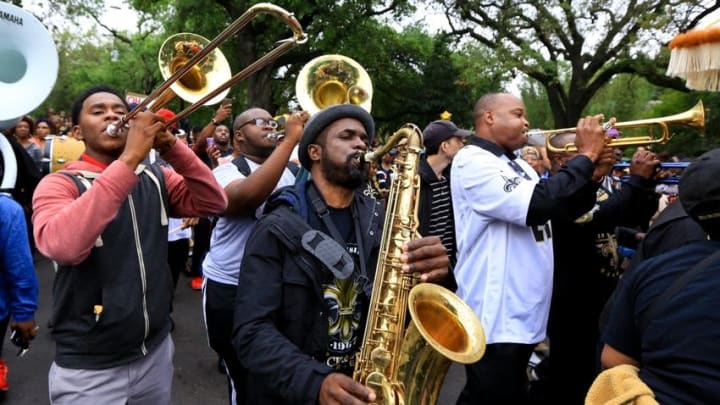Pictures of Pelicans History: Hornets relocate to New Orleans

Pelican Debrief’s “Pictures of Pelicans History” is a series looking at the best and worst moments in the New Orleans Pelicans/Hornets history.
In this installment of “Pictures of Pelicans History,” it is time to take a look at the franchise’s defining event: the relocation of the team from Charlotte to New Orleans.
The separation of on-court success and financial profit in the world of professional sports is always uncomfortable and messy. It’s fitting that the story of a transplanted, money-losing basketball franchise would end while that team played in a competitive playoff series. And that’s exactly what happened, as league owners voted in May of 2000 to allow the Hornets to move from Charlotte to New Orleans as the team battled the New Jersey Nets in the second round of the NBA playoffs.
Following a few seasons full of wins on the court and losses in the bank, the city of Charlotte denied a referendum put forth by Hornets owners George Shinn and Ray Wooldridge that would fund the construction of a new arena for the team. That marked the beginning of the end in Charlotte for a franchise that had finally put a marketable and competitive core together.
Related Story: Pelicans All-Time Team: Backup Point Guard
Led by Baron Davis, P.J. Brown and David Wesley, the Hornets were ready to rise to the top of a post-MJ Eastern Conference, despite several factors working against them. First, years-old reports of Shinn sexually assaulting a Charlotte woman gave the team a bad name locally, forcing the organization’s first relocation request to Memphis. Second, the economic conditions in the city of Charlotte were such that it made little sense to include a basketball arena in the budget; the referendum was opposed by lower-class voters in the city and failed to pass.
"“It’s like a kid when his parents go through a divorce,” he said of his frustration leading up to Friday’s formal announcement. “It affects him but, really, he has nothing to do with it. That’s kind of the way this was. All the questions were directed at us. Our owners weren’t saying a lot. We kind of got stuck with it. We’ve done what we’re supposed to do. We won games.”- Paul Silas, May 2000"
The owners stopped going to games, the city lost touch with the team, and the league soured on Shinn. It took an unfortunate diagnosis of prostate cancer to rid the team of an abysmal owner, but this series of events was the first domino to fall in what would eventually lead us to where we are now. Part of the relocation agreement promised Charlotte a new team within two years, which would eventually become the Bobcats, and then the Hornets again. The Hornets would bow out of two consecutive first round series before plummeting to 18-64 in coach Byron Scott’s first season with the team.
In its first game in the new home arena, the New Orleans Hornets hosted the Utah Jazz in an ode to coincidence, retiring “Pistol” Pete Maravich’s number 7 at halftime in an ode to beautiful basketball. The rest of the franchise’s story will be saved for the next few installments of Pictures of Pelicans History, but Shinn basically bridges the gap between the relocation and the 2015 playoff appearance behind Anthony Davis.
Next: Pictures of Pelicans History: Pelicans win 2012 Draft Lottery
The league has distanced itself from the musical chairs act it underwent in the early- and mid-2000s, but it’s safe to say the Hornets found a great home when they made the leap shortly after the turn of the century. New Orleans has provided a passionate fan base for its basketball team since Shinn and Wooldridge moved their business here nearly 15 years ago. The Crescent City saved the Hornets, and in many ways, the Hornets have been a positive force in New Orleans.